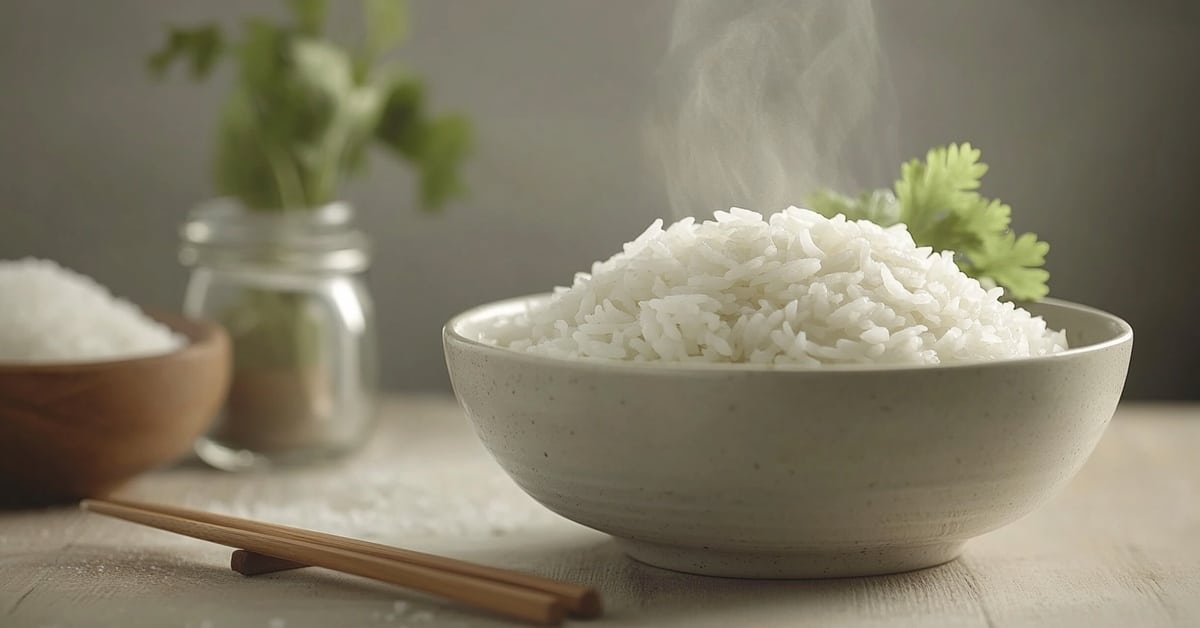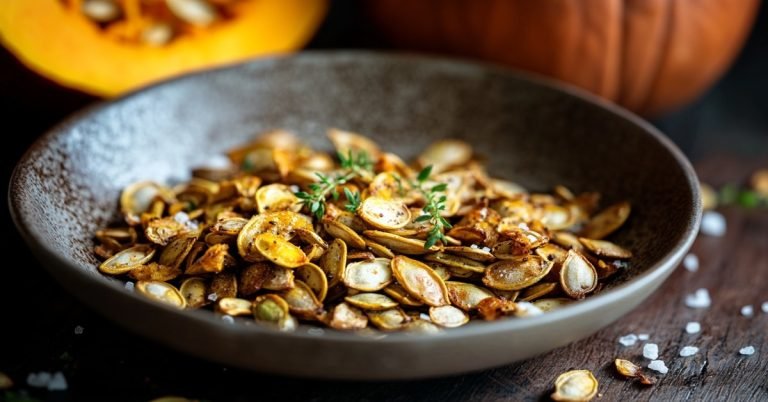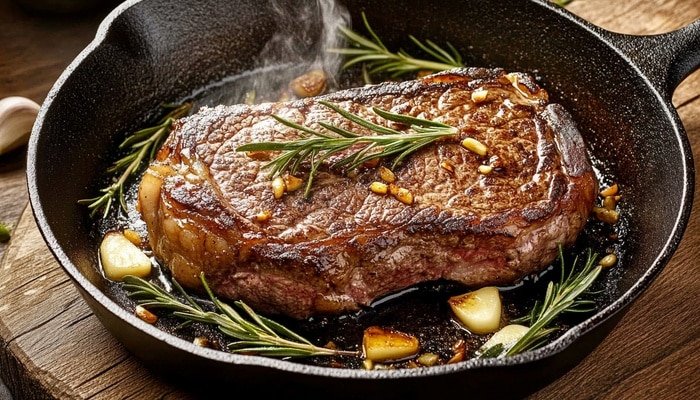To cook perfect rice on the stove, start by selecting the right variety for your dish and rinsing it thoroughly to remove excess starch. Measure your rice and water using the correct ratio, typically 2:1 water to rice, and bring it to a boil in a saucepan. Once boiling, reduce the heat to low, cover, and simmer for about 18 minutes. After cooking, let the rice rest off the heat for 5-10 minutes to allow even moisture distribution. Finally, fluff the rice gently with a fork to separate the grains without crushing them. By following these steps, you’ll achieve fluffy, perfectly cooked rice every time. But there’s more to mastering this essential cooking skill than meets the eye.
Table of Contents
ToggleKey Takeaways
- Choose the right rice variety for your dish and rinse it thoroughly to remove excess starch.
- Use the correct water-to-rice ratio, typically 2 cups water for 1 cup rice, adjusting as needed.
- Bring water to a boil, add rice and salt, then reduce heat to simmer for about 18 minutes.
- Let rice rest covered for 5-10 minutes off heat after cooking for even moisture distribution.
- Fluff rice gently with a fork to separate grains and enhance texture before serving.
Choosing the Right Rice
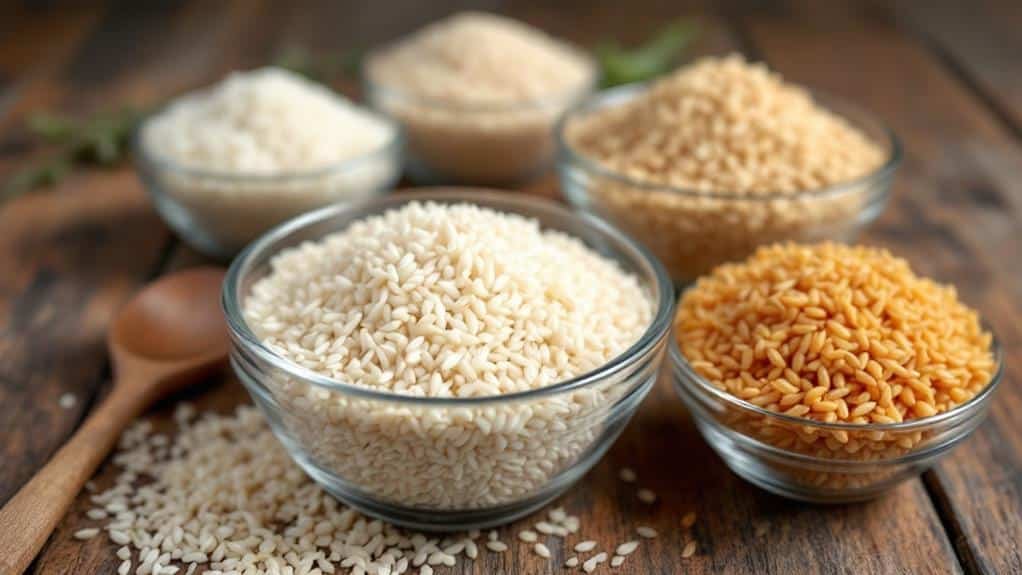
Rice variety plays a pivotal role in achieving the perfect texture and flavor for your dish. When you’re ready to cook rice on the stove, it’s crucial to understand the different types of rice available.
Long grain rice, like Basmati or Jasmine, produces fluffy, separate grains ideal for stir-fries, fried rice and side dishes. This type of rice pairs excellently with a flavorful Easy Chicken Curry.
Medium grain rice, such as Arborio, is perfect for creamy risottos and paellas.
Short grain rice, like sushi rice, becomes sticky when cooked, making it great for sushi rolls and rice puddings.
Each type has its own unique characteristics and cooking requirements. Consider the cuisine you’re preparing and the desired texture of your final dish when selecting your rice. By choosing the right rice for your recipe, you’ll be well on your way to creating a delicious, satisfying meal that’ll impress your family and guests.
Rinse & Prepare to Cook Perfect Rice
Before you start cooking, it’s important to properly rinse and prepare your rice. Begin by placing your rice in a fine-mesh strainer and rinse it thoroughly under cold running water, gently agitating the grains with your fingers. This process removes excess starch, preventing your rice from becoming sticky or gummy.
Continue rinsing until the water runs clear, which may take several minutes. Once rinsed, transfer the rice to your cooking pot and add the appropriate amount of water to rice, typically using a 2:1 ratio of water to rice.
Let the rice soak for about 30 minutes before cooking, allowing the grains to absorb some moisture. This step guarantees more even cooking and helps achieve that perfect, fluffy texture you’re aiming for. Remember, taking the time to properly prepare rice will enhance your entire dish.
Water-to-Rice Ratio
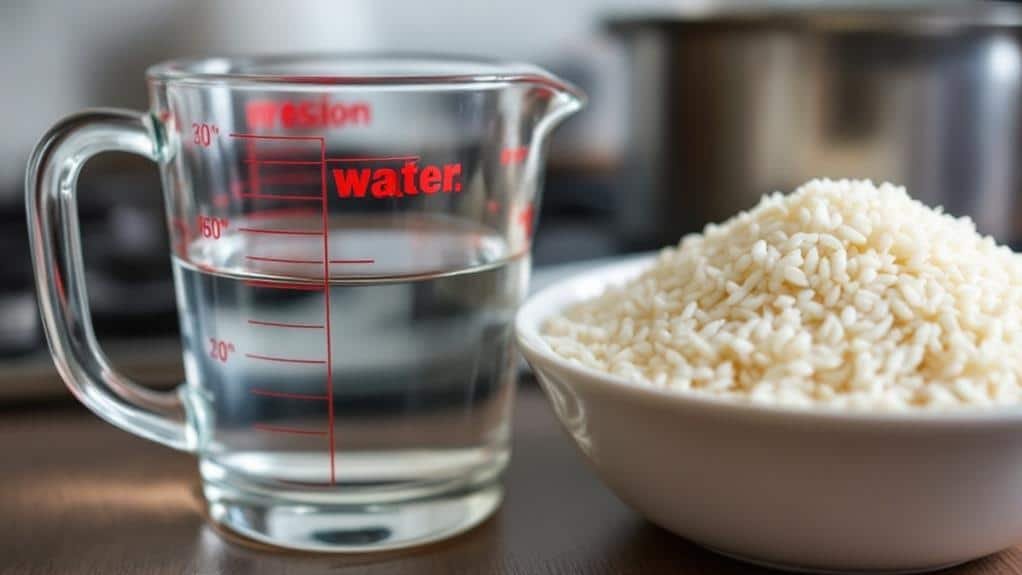
When it comes to cooking perfect rice, nailing the water-to-rice ratio is vital. The standard ratio for most types of rice is 2 cups of water for every 1 cup of rice, but this can vary depending on the specific variety you’re using.
To get started, measure your rice carefully and place it in a pot. Then, add the appropriate amount of water, keeping in mind that you’ll want to bring the water to a boil before reducing the heat to simmer.
For long-grain white rice, stick to the 2:1 ratio, while brown rice may require slightly more water. Remember, getting the water-to-rice ratio right is important for achieving fluffy, tender grains that’ll complement your main dishes perfectly.
Don’t be afraid to experiment and adjust as needed to find your ideal consistency.
Seasoning and Aromatics
To elevate your rice from bland to grand, seasoning and aromatics play an essential role. As you prepare to cook, don’t forget to add salt to the water, which will infuse the grains with flavor from the start.
For an extra burst of taste, try sautéing aromatic ingredients like minced garlic, ginger, or finely diced onions in a bit of oil before adding the rice and water.
You can also experiment with whole spices, such as cardamom pods or cinnamon sticks, which will release their essence during cooking.
Once your rice is done, fluff the rice gently with a fork to distribute the seasonings evenly. Remember, the goal is to enhance flavor without overpowering the natural taste of the rice.
Cooking Process
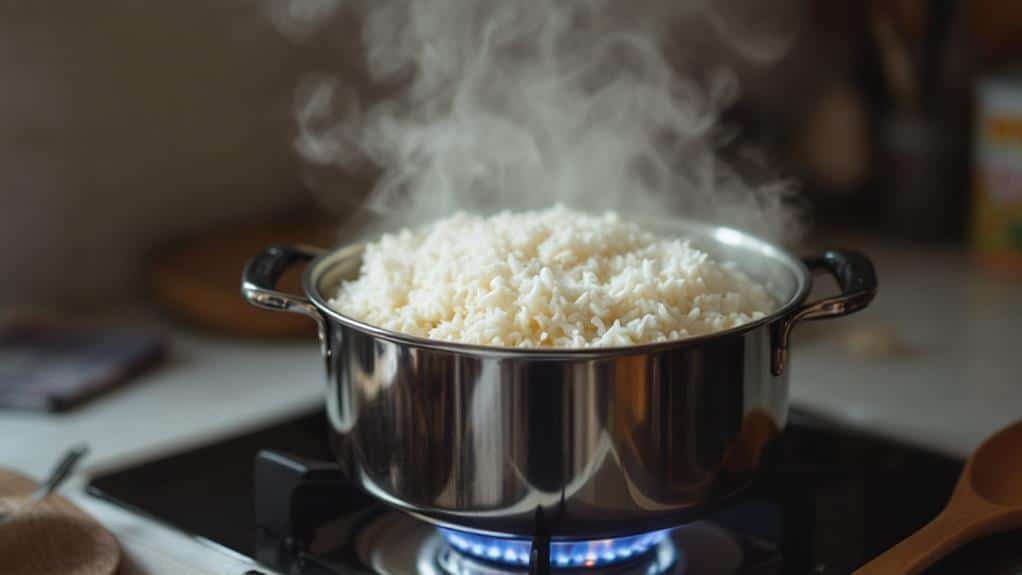
The rice-cooking process is straightforward but requires attention to detail for perfect results. To cook white rice, start by measuring your rice and water using the correct water-to-rice ratio, typically 2:1. Bring the water to a boil in a pot, then add your rinsed rice and a pinch of salt. Give it a quick stir, reduce the heat to low, and cover the pot tightly.
Now, the essential part begins: simmering. Maintain a gentle bubble for about 18 minutes, resisting the urge to peek or stir. Once the time’s up, remove the pot from heat and let it sit, covered, for 5-10 minutes. This resting period allows the rice to absorb any remaining moisture.
Resting and Fluffing
You’ve almost reached the finish line in your rice-cooking journey. Once the cooking time is up, resist the urge to immediately lift the lid. Instead, let your rice rest for 5-10 minutes off the heat, allowing the steam to continue working its magic. This essential step ensures that the moisture distributes evenly, resulting in perfect rice every time.
After the resting period, gently remove the lid and marvel at the steamy, fragrant grains before you. Now, it’s time to fluff the rice with a fork, carefully separating the individual grains without crushing them. As you do this, you’ll notice how light and airy the rice becomes, ready to absorb sauces or complement your main dish.
Troubleshooting Common Rice Issues
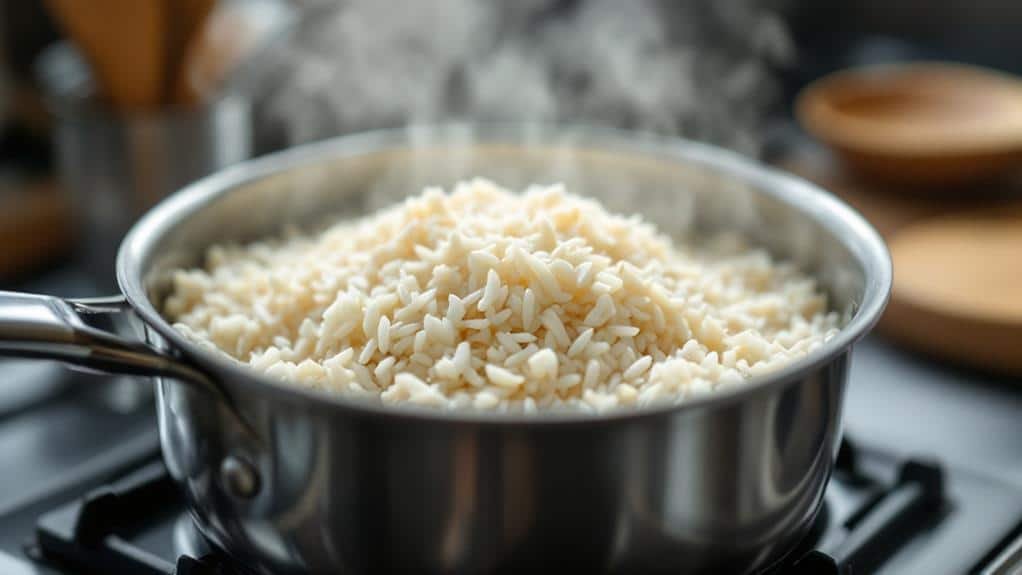
Despite your best efforts, you may occasionally encounter some hiccups when cooking rice. Don’t worry; these common rice issues are easily fixable! So before you throw in the towel and buy a rice cooker or an instant pot, try the following.
If your rice turns out mushy, you’ve likely used too much water. Next time, reduce the water-to-rice ratio slightly.
On the other hand, if your rice is too dry or undercooked, simply add a splash more water and continue cooking for a few minutes.
When rice sticks to the bottom of the pot, remove it from heat and let it rest for 5-10 minutes; this often resolves the issue.
Frequently Asked Questions
Can I Cook Rice in a Slow Cooker or Pressure Cooker?
Yes, you can cook rice in both a slow cooker and pressure cooker. You’ll need to adjust cooking times and water ratios accordingly. Pressure cookers are faster, while slow cookers are great for hands-off cooking. Experiment to find your preferred method.
How Long Can Cooked Rice Be Safely Stored in the Refrigerator?
Time is rice’s enemy in the fridge. You’ll want to store your cooked rice for no more than 3-4 days. Keep it in an airtight container to maintain freshness. Serve it quickly to guarantee your loved ones enjoy the best quality.
Is It Possible to Cook Different Types of Rice Together?
Yes, you can cook different types of rice together! You’ll want to be mindful of cooking times and water ratios. It’s best to combine varieties with similar cooking requirements to make sure they’re all perfectly cooked for your guests.
Can I Freeze Cooked Rice for Later Use?
Did you know frozen rice can last up to 6 months? You can freeze cooked rice for convenient meal prep. Cool it quickly, portion it out, and store in airtight containers. It’ll be ready whenever you need to serve a quick meal.
What’s the Best Way to Reheat Leftover Rice Without Drying It Out?
You’ll want to add moisture when reheating rice. Sprinkle water over it, cover, and microwave in short bursts. Alternatively, you can steam it on the stove. Stir occasionally to make sure even heating and prevent drying out.
Conclusion
You’ve set off on a culinary journey, mastering the ancient art of rice preparation. Like Odysseus returning to Ithaca, you’ve navigated the treacherous waters of undercooked grains and mushy mishaps. Now, armed with these techniques, you’re ready to create perfectly fluffy rice that’ll make even the gods of Mount Olympus envious. Remember, practice makes perfect, so don’t be discouraged if your initial tries aren’t Michelin-star worthy. Keep refining your skills, and soon you’ll be crafting rice dishes fit for heroes.

